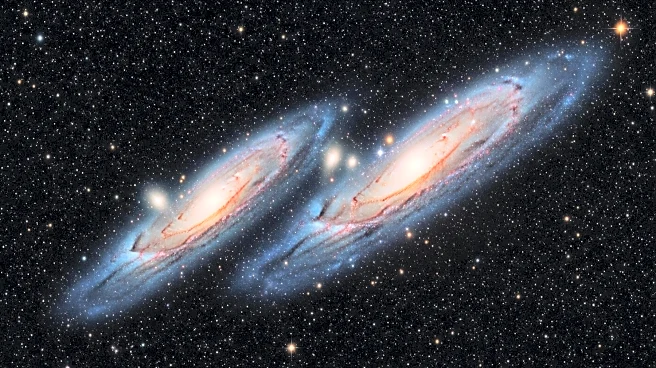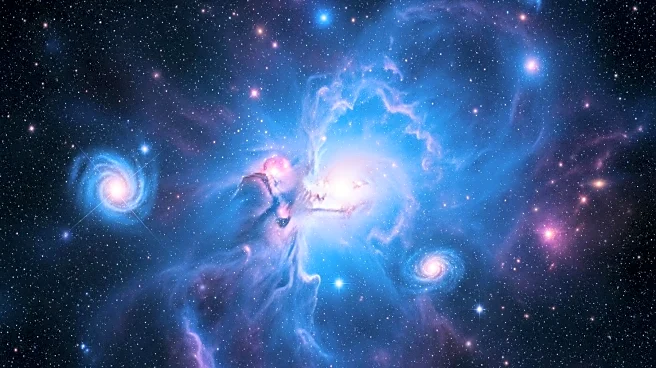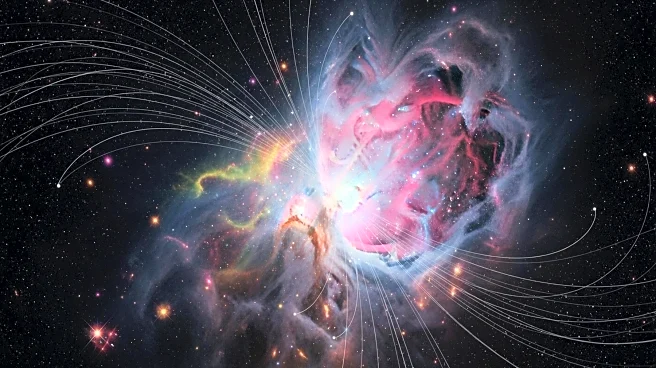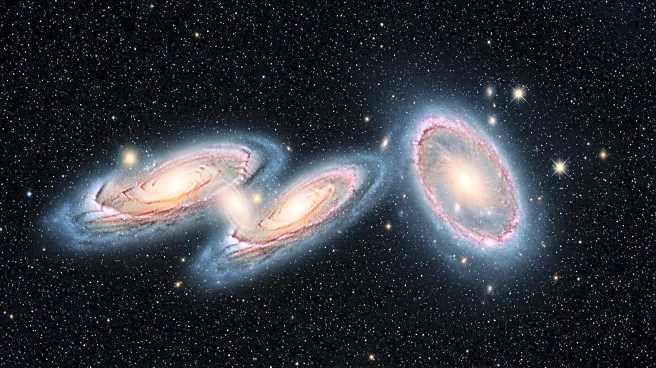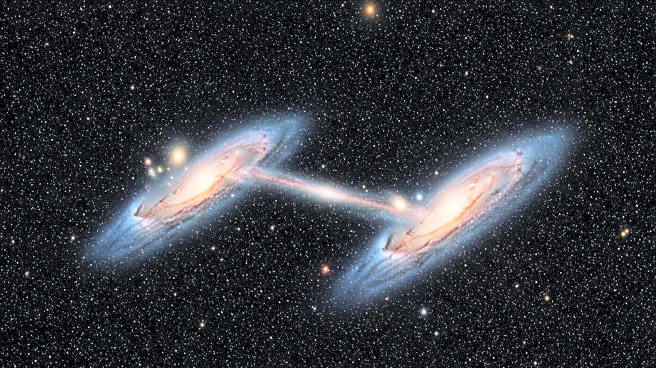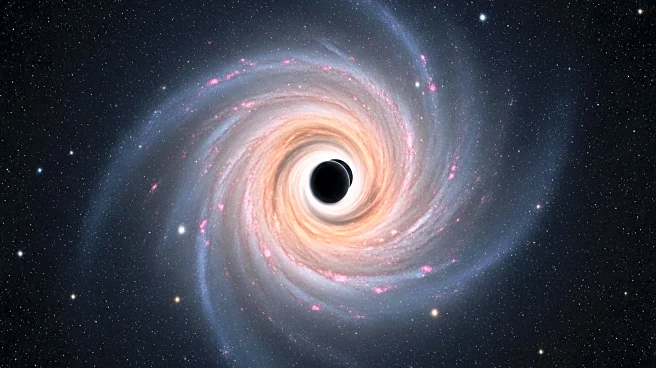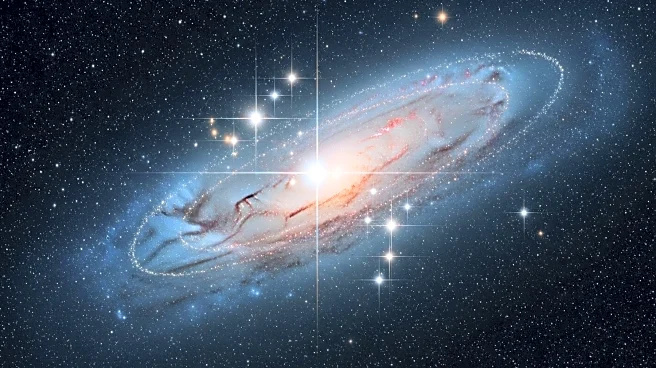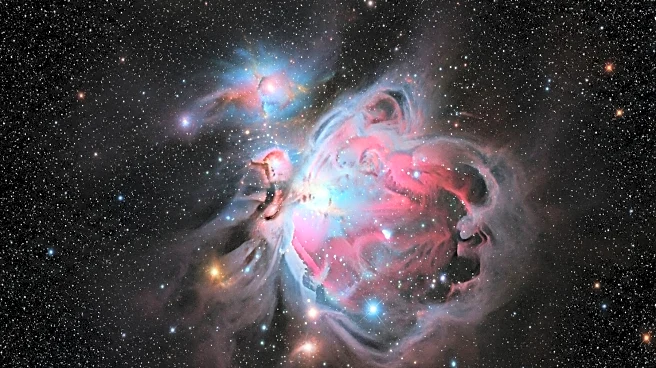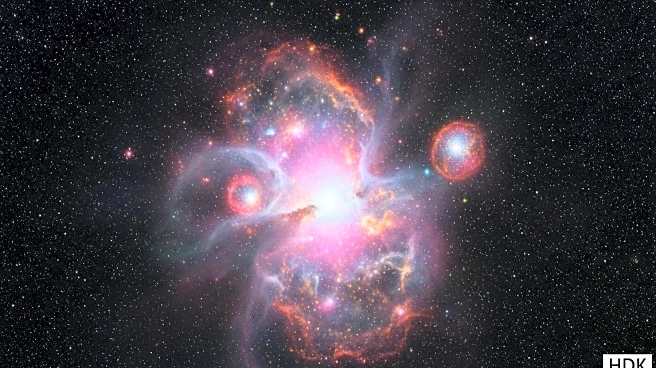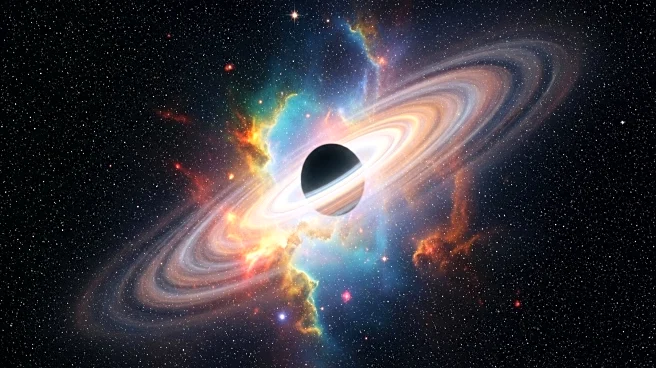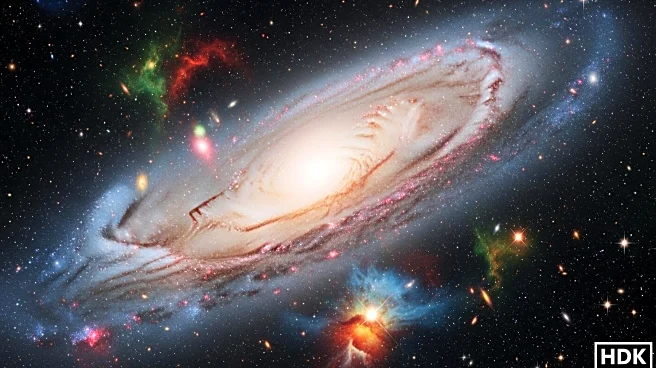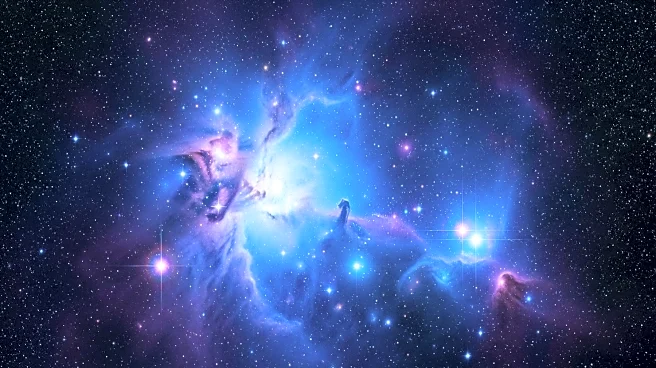What is the story about?
What's Happening?
Astronomers have identified a massive gas bridge between two galaxies, NGC 4532 and DDO 137, as they fall into the Virgo Cluster at a speed of 547 miles per second. This phenomenon is attributed to gravitational tides between the galaxies, which pull gas from each other, forming the bridge and associated spurs. The discovery was made using the Australian Square Kilometre Array Pathfinder (ASKAP) radio telescope, which revealed a colossal bridge of gas crossing the 185,000 light-years between the two galaxies. The bridge's formation is explained by the density of electrons and the speed at which the galaxies are moving into the hot gas cloud surrounding the Virgo Cluster.
Why It's Important?
The discovery of the gas bridge provides critical insights into galaxy evolution and the dynamics of galactic gas redistribution. Understanding these structures helps astronomers learn more about star formation conditions and the life cycles of massive cosmic structures. The findings contribute to a broader understanding of the universe's complexities and the history of star formation, offering a glimpse into how galaxies interact and evolve over time.
What's Next?
The observations were part of a pilot study for the Widefield ASKAP L-Band Legacy All-sky Survey (WALLABY), which aims to study neutral hydrogen in galaxies across the sky. This survey will further explore how cosmic forces shape galactic gas and its role in star formation, potentially leading to new discoveries about galaxy dynamics and evolution.
Beyond the Headlines
The phenomenon observed in the Virgo Cluster is similar to the Magellanic Stream between the Large and Small Magellanic Clouds, which also involves tidal forces and gas dynamics. Such studies enhance our understanding of the universe's largest structures and their interactions, providing a deeper insight into cosmic evolution.
AI Generated Content
Do you find this article useful?
